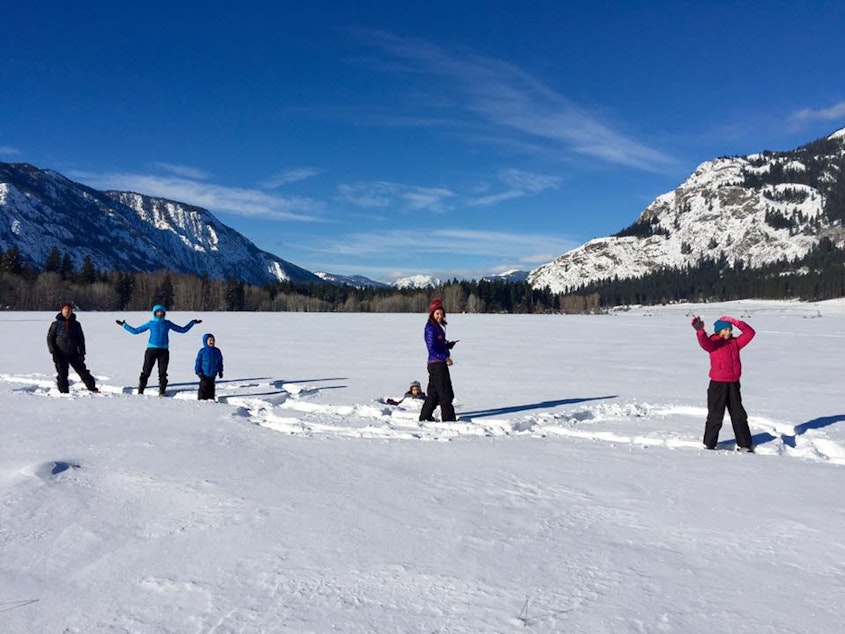How far do Seattleites have to go for some GD sun?!

This winter was one of the rainiest winters on record in Seattle. That got KUOW listener Tom Donnelly wondering, “How far from Seattle would you have to travel to get a full day of sunshine?"
We too were desperate to know.
If you look at climate data from the state and Western U.S., there are three cities that average 210 clear days a year. They are Phoenix, Las Vegas and Omak, Washington — a small, dusty town in northeast Washington.
Omak isn’t a big tourist destination, but nearby Winthrop in the Methow Valley is a haven for outdoor enthusiasts. (It takes four hours, no breaks, to drive to Winthrop from Seattle.)
Diane Childs, co-owner of Winthrop Mountain Sports, said she can track weather in western Washington based on the cross-country skiers coming into her store, thirsty for sunshine.
Sponsored
“They are just shell-shocked,” Childs said. “From being on, well, we don’t call it the west side, we call it the 'wet side' over here.”
We also put this question to Nick Bond, Washington state’s climatologist. “I like rain,” he said. “I’m always a little disappointed when it stops raining.”
Still, he indulged the question. He said to appreciate sunshine, you have to understand rain shadows.
Winds generally move from west to east in Washington state, Bond said. Air that comes from the west cools as it moves up over the mountains. And as it cools and moves toward Seattle, it brings along clouds and rain.
Once the air gets up over the mountain, the reverse process happens — it gets warmer and drier as it moves down the mountain range and heads east.
Sponsored
Sequim and Shelton are on the Olympic Peninsula, a part of the state notorious for its nonstop rain. But those two cities are on the eastern edge of the Olympic rain shadow and get more sun than Olympia and Seattle. (And less rain: Average rainfall in Seattle is 37 inches. Average rainfall in Sequim is 16 inches.)
There’s also a massive rain shadow east of the Cascades.
That’s where listener Dave O’Hern says to go for sunshine: “Head east to Ellensburg, then south to Yakima, then south to Goldendale until it’s sunny to your satisfaction.”
Ellensburg, roughly two hours from Seattle, is one of the first places you hit east of the Cascade rain shadow. And Yakima has a big sign on the side of the road that reads: “Welcome to Yakima, The Palm Springs of Washington.”
(Warning to newbies: It’s really windy in Ellensburg.)
Sponsored
There are other ways to measure sunshine. Climatologists, for example, define sunshine by how many clouds there are in the sky.
NASA goes deeper to examine cloud thickness. Bill Crosson, who helps with that research, said NASA tracks sunshine in terms of solar radiation.
“Those different clouds allow different amounts of solar radiation to come through,” Crosson said.
NASA also considers how long the sun is in the sky. There’s more solar radiation closer to the equator, which is why counties in southeastern Washington get the most solar radiation. First in the state is Klickitat County, where Goldendale is. Yakima County is second.
(Goldendale is about 3.5 hours away. Yakima is 2.5 hours away.)
Sponsored
Now for a personal tip: If you don’t mind driving another hour or so, go to Waitsburg. Or Walla Walla. Those cities have good wine and food and get 194 days of sunshine a year. The drive over is gorgeous, the air is still and summer nights are warm.
There it is, wet-siders. If you want to find a full day of sunshine, drive about two hours east to Yakima or Ellensburg. If that’s not sunny enough for you, drive south to Klickitat County or a few hours north to Omak or Winthrop.
